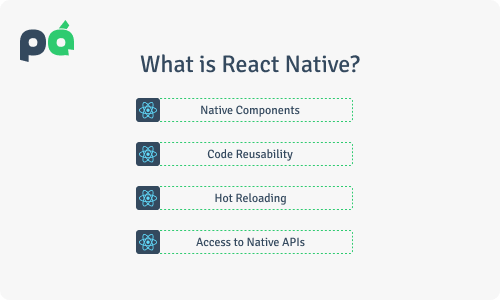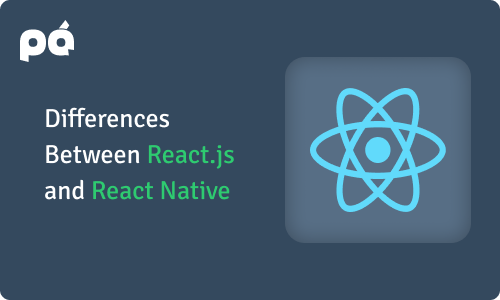React.js vs. React Native: Understanding the key differences
React.js and React Native are two popular frameworks used for developing web and mobile applications, respectively. While they share a common foundation, there are significant differences between the two.
In this article, we will explore the disparities, advantages, and best use cases for React.js and React Native.
What is React.js?

React.js, commonly referred to as React, is an open-source JavaScript library developed by Facebook. It provides a component-based approach for building user interfaces (UIs) for web applications. When the underlying data changes, developers can quickly update reusable UI components thanks to React.
Key Features of React.js
Component-Based Architecture: React.js follows a modular approach, where UIs are built using individual components that can be reused throughout the application.
Virtual DOM
React utilizes a virtual representation of the DOM, enabling efficient updates by selectively rendering components that have changed.
Unidirectional Data Flow
React enforces a one-way data flow, making it easier to track changes and maintain the application’s state.
JSX Syntax
React uses JSX, a syntax extension that allows developers to write HTML-like code within JavaScript, enhancing readability and ease of use.
What is React Native?

React Native, also developed by Facebook, is a framework for building cross-platform mobile applications. It leverages React’s component-based architecture to create native UI components for iOS and Android platforms, providing a native-like experience.
Key Features of React Native
Native Components
React Native allows developers to build native UI components using JavaScript, ensuring optimal performance and a consistent look and feel across platforms.
Code Reusability
With React Native, a significant portion of code can be shared between iOS and Android platforms, reducing development time and effort.
Hot Reloading
React Native supports hot reloading, enabling developers to see real-time changes instantly without recompiling the entire application.
Access to Native APIs
React Native provides access to platform-specific APIs, allowing developers to incorporate device-specific features seamlessly.
Differences Between React.js and React Native

While React.js and React Native share similarities, it’s essential to understand their differences to choose the right framework for your project.
Development Target
Web apps built using React.js are often utilised in web browsers. On the other hand, React Native targets mobile platforms and allows developers to create mobile applications using JavaScript.
User Interface
React.js generates UI components using HTML and CSS, which are rendered in web browsers. React Native, on the other hand, uses native UI components specific to the mobile platform, resulting in a more native-like user experience.
Code Sharing
React.js focuses on building web applications, and its code cannot be directly reused in React Native projects. However, React Native allows for a significant portion of code sharing between iOS and Android platforms, reducing the development effort.
Access to Native APIs
React.js does not provide direct access to native APIs. In contrast, React Native offers access to platform-specific APIs, allowing developers to incorporate device-specific features seamlessly.
Performance
Since React Native utilizes native UI components, it generally provides better performance compared to React.js. React Native apps have a faster startup time and offer smoother animations, resulting in a more responsive user experience.
Best Use Cases for React.js and React Native

React.js is an excellent choice for building interactive web applications that require frequent UI updates.
It is suitable for single-page applications, complex UIs, and applications that heavily rely on real-time data synchronization. React.js is widely used by companies such as Facebook, Instagram, Airbnb, and Netflix.
React Native, on the other hand, is ideal for developing cross-platform mobile applications. It allows for code reusability, enabling developers to write once and deploy on both iOS and Android platforms. React Native is commonly used for building mobile apps in various domains, including social media, e-commerce, travel, and entertainment.


